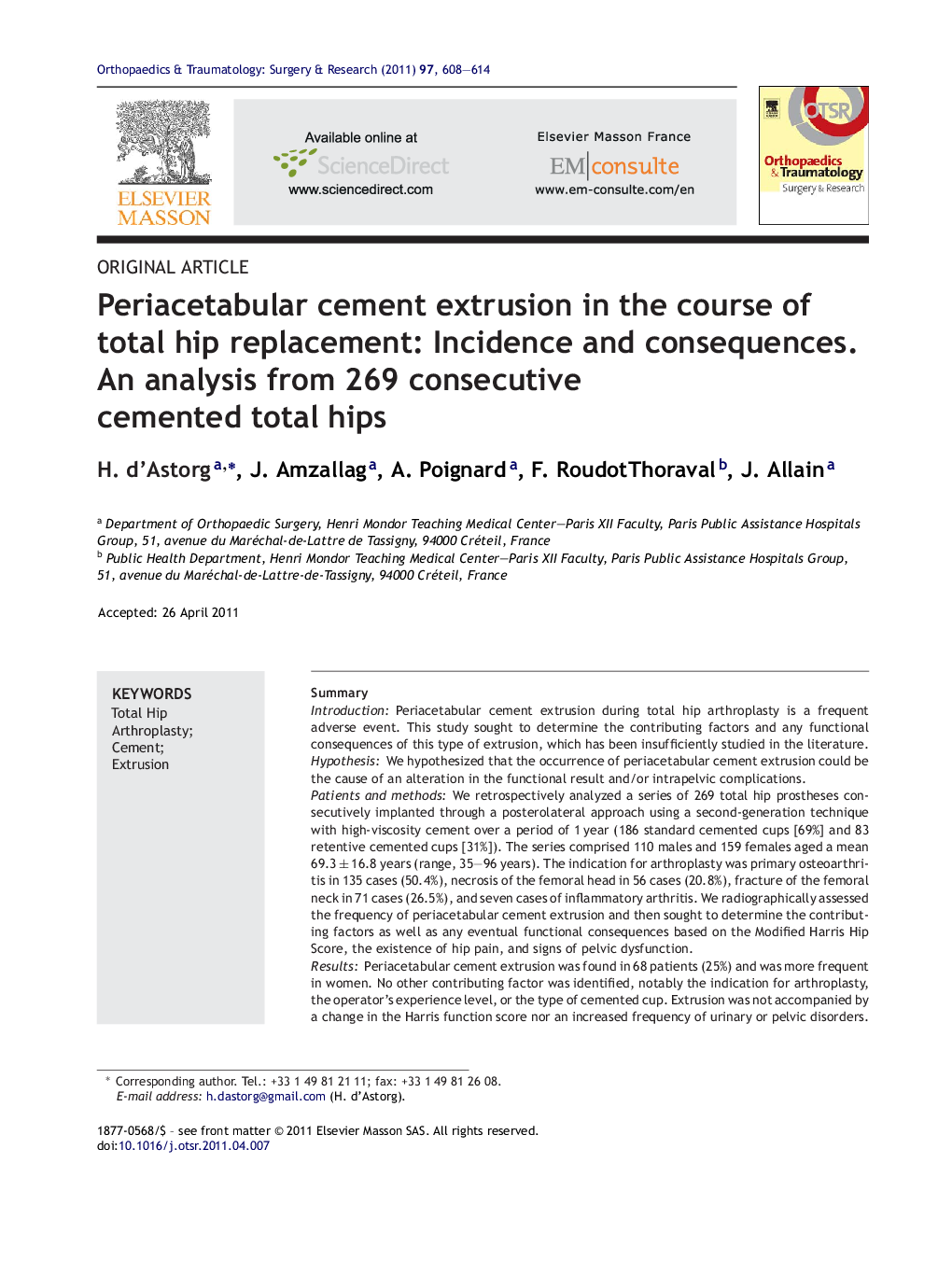| کد مقاله | کد نشریه | سال انتشار | مقاله انگلیسی | نسخه تمام متن |
|---|---|---|---|---|
| 4081907 | 1267614 | 2011 | 7 صفحه PDF | دانلود رایگان |

SummaryIntroductionPeriacetabular cement extrusion during total hip arthroplasty is a frequent adverse event. This study sought to determine the contributing factors and any functional consequences of this type of extrusion, which has been insufficiently studied in the literature.HypothesisWe hypothesized that the occurrence of periacetabular cement extrusion could be the cause of an alteration in the functional result and/or intrapelvic complications.Patients and methodsWe retrospectively analyzed a series of 269 total hip prostheses consecutively implanted through a posterolateral approach using a second-generation technique with high-viscosity cement over a period of 1 year (186 standard cemented cups [69%] and 83 retentive cemented cups [31%]). The series comprised 110 males and 159 females aged a mean 69.3 ± 16.8 years (range, 35–96 years). The indication for arthroplasty was primary osteoarthritis in 135 cases (50.4%), necrosis of the femoral head in 56 cases (20.8%), fracture of the femoral neck in 71 cases (26.5%), and seven cases of inflammatory arthritis. We radiographically assessed the frequency of periacetabular cement extrusion and then sought to determine the contributing factors as well as any eventual functional consequences based on the Modified Harris Hip Score, the existence of hip pain, and signs of pelvic dysfunction.ResultsPeriacetabular cement extrusion was found in 68 patients (25%) and was more frequent in women. No other contributing factor was identified, notably the indication for arthroplasty, the operator's experience level, or the type of cemented cup. Extrusion was not accompanied by a change in the Harris function score nor an increased frequency of urinary or pelvic disorders.DiscussionPeriacetabular cement extrusion is frequent but its consequences are rare (mechanical, vascular, neurological, urological, or visceral). Preventing their occurrence with well-adapted technique is warranted (avoidance of perforating anchoring holes, control of cement penetration). Given the rarity of the consequences, ablation of any extrusion diagnosed intraoperatively should be cautiously pondered upon to prevent any potential iatrogenic incident for a doubtful gain. In cases of local pain persistence, the usual causes of hip pain should be ruled out before attributing the source of functional discomfort to extrusion and envisioning its removal.Level of evidenceLevel IV. Retrospective study.
Journal: Orthopaedics & Traumatology: Surgery & Research - Volume 97, Issue 6, October 2011, Pages 608–614